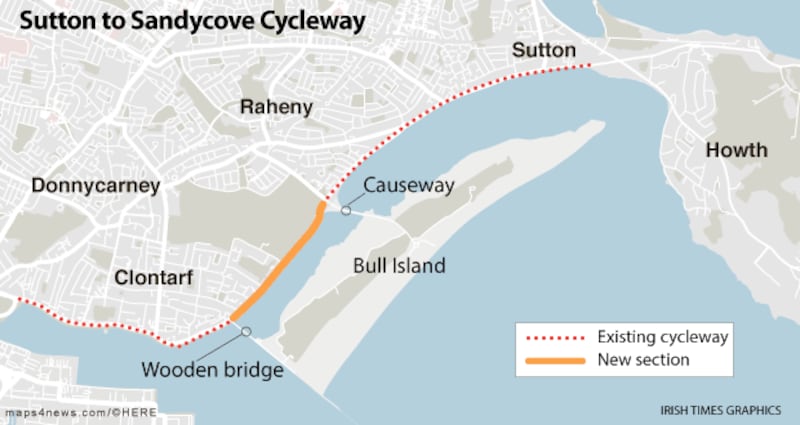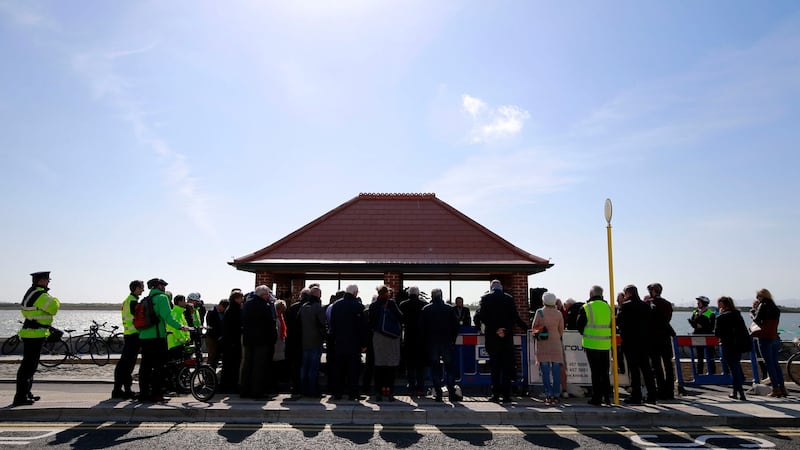The 8.5km off-road cycle path which runs from Clontarf to Sutton along Dublin bay has been completed 25 years after work began.
The cycle path was put in place in the early 1990s but a 2km space was left between Causeway Road and the Wooden Bridge because no solution could be found to building on the environmentally sensitive lagoon.
As a result, cyclists heading north had to leave the off-road path at the Wooden Bridge traffic lights and use the on-road cycle path on Clontarf Road which was in extremely poor repair and frequently occupied by parked cars.
After several years in development a plan was finalised in 2008 that involved a pile-supported promenade and cable-stay bridging out over the lagoon. Its cost was up to €14 million, or €7 million per kilometre, and it was never implemented.

In 2013 the council decided to close the gap by taking space from the road, reducing the width of the traffic lanes and keeping the new cycle lane to the road side of the sea wall. Construction began two years ago and the “missing link” which has cost in the region of €5 million has now opened.
Speaking at the opening Anne Graham, chief executive of the National Transport Authority said the opening of the 2km section was a step towards developing a continuous 22km cycle path from Sutton to Sandycove.

“This segment of the Sutton to Sandycove project will not only provide a safer environment for cyclists from Clontarf and surrounding areas who use their bike to get to work, but will be of great amenity benefit to families, locals and visitors alike.”

As part of the cycle path project footpaths and public lighting have been upgraded . A new watermain has also been installed and the seawall increased in height to provide better flood defences. However, as The Irish Times reported last month work is expected to begin this year to reduce the height of the newly-built flood defence wall which obscures motorists' views of the sea.
The council has decided to trim up to 30cm off the height of a section of the wall along almost half a kilometre opposite St Anne’s Park.

Following a long-running dispute with local residents and the commissioning of expert reports, the council in April last year agreed to reduce the height of the wall by 30cm. However, in a report to councillors senior engineer Christopher Manzira said it would not be possible to reduce the height by 30cm for the entirety of the 470m section because this would make it so low in parts there would be a danger of walkers toppling over into the sea.







